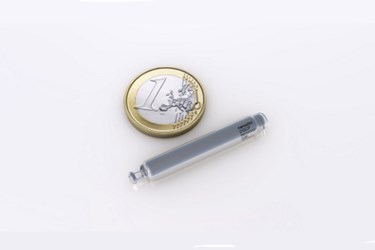St. Jude "On Track" With Heart Failure Portfolio, Cardiac Rhythm Still "Under Pressure"

St. Jude Medical CEO Michael Rousseau credits the continued integration of Thoratec and the successful launch of ten new products for the company’s steady sales growth that “beat expectations” in the first part of 2016. But, St. Jude’s cardiac rhythm management (CRM) business is still “under pressure,” said senior executives, as forecasted dates for MRI-conditional labeling have been pushed back to later this year.
Compared to the first quarter of 2015, St. Jude’s overall revenues were up 8 percent, which brings its year-to-date sales to $1.45 billion, according to a press release. Growth across the company’s key business segments — including neurostimulation, atrial fibrillation, and heart failure — was only offset by a 7 percent dip in CRM sales.
“First quarter results reinforce our confidence that we are focused on the right priorities and are making progress against the objectives we discussed in February,” said Rousseau in an earnings call. “These priorities are: successfully launch key products to drive sales growth, establish U.S. reimbursement for CardioMEMS nationwide, successfully integrate our Thoratec acquisition, and execute the plan for recovery in U.S. CRM.”
According to Rousseau, the full integration of Thoratec and its portfolio of heart failure (HF) products, acquired in October, is “essentially complete,” and this segment’s first-quarter sales were in the strong double digits.
“To increase our focus on expanding the market for CardioMEMS and LVADs, we have leveraged the legacy Thoratec sales structure to form a combined dedicated U.S. Heart Failure Organization,” said Rousseau.
In order to further drive growth in the HF segment, St. Jude also has submitted an application to the Centers for Medicare and Medicaid Services (CMS) for a national coverage determination for CardioMEMS, a wireless monitoring sensor implanted in the pulmonary artery to transmit real-time pressure readings. Rousseau commented in the earnings call that he expects a final decision within the year, and noted the CardioMEMS system is on track to achieve $65 million 2016 revenues.
So far in 2016, St. Jude has achieved 10 regulatory approvals for products, including the Axium DRG System and MultiPoint Pacing and Quartet Leads, both approved by the FDA in February.
Though St. Jude and Medtronic were both invited to the FDA’s 2015 workshop to discuss regulatory considerations for leadless pacing technology, Medtronic received FDA approval for the Micra ahead of St. Jude’s Nanostim. According to Rousseau, St. Jude is working with the FDA to secure an approval for its leadless pacemaker in the second half of 2016.
In the earnings call, St. Jude CFO Don Zurbay said he was “pleased with the momentum” of the majority of St. Jude’s businesses, but he noted that traditional CRM sales continue to slow, due in part to a delay in the approval of MRI-compatibility labeling.
“We think not having an MRI-compatible pacemaker until the second half of 2016 will cost us approximately $15 to $20 million in 2016 revenue,” said Rousseau.
